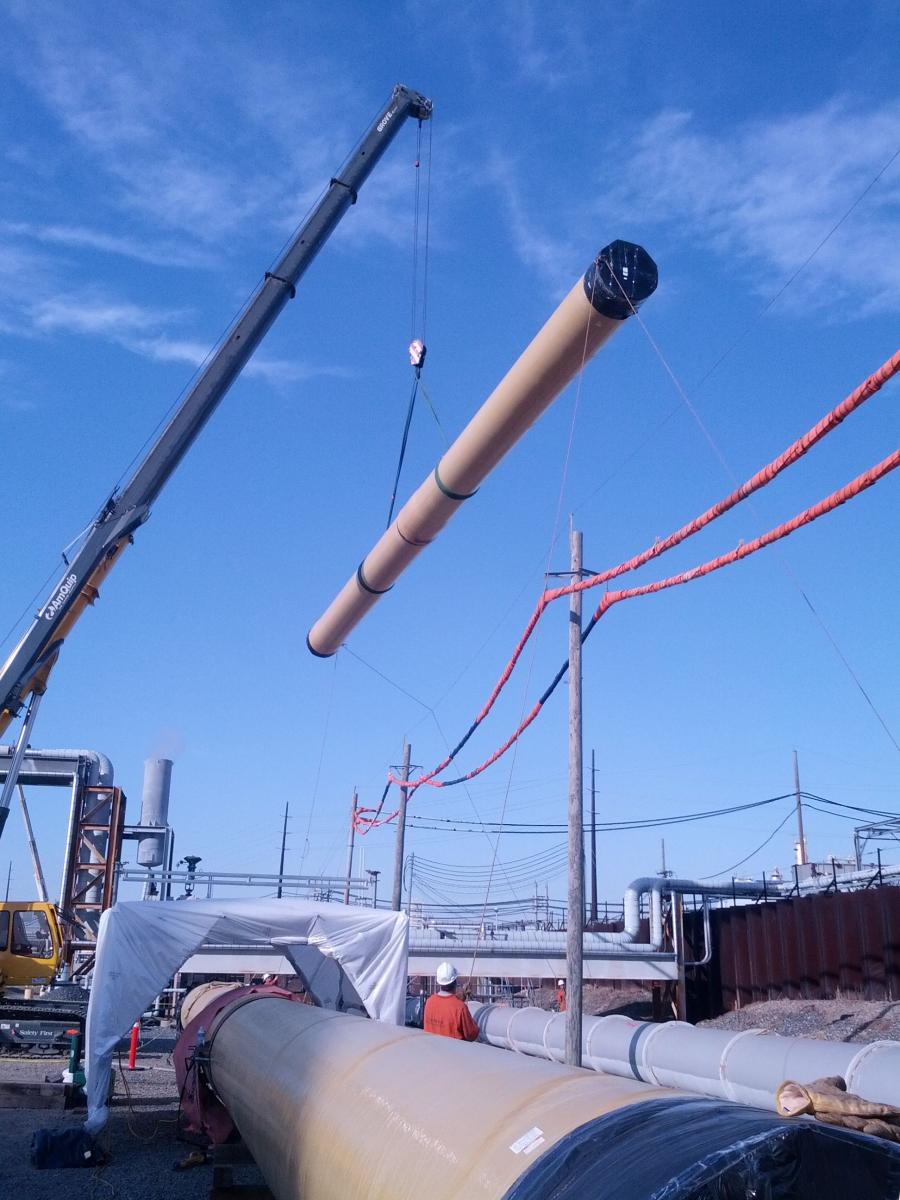Sustainable Solutions: The Environmental Edge of FRP Piping Systems

Introduction to FRP Piping Systems
In the search for sustainability within modern engineering practices, the emphasis on materials that offer environmental benefits without compromising on performance has never been more critical. Enter Fiber Reinforced Plastic (FRP) Piping Systems – a example of sustainability in the space of industrial materials. Crafted by innovators in the field, such as NOV Fiber Glass Systems, fibreglass piping systems are not merely a choice but a necessity for forward-thinking industries. This article will unpack the environmental edge fibreglass brings to the table, highlighting its role in fostering sustainable industrial practices.
Why FRP Piping Systems Stand Out
FRP Piping Systems, developed with the expertise of companies like NOV Fiber Glass Systems, are engineered from a blend of polymer matrix and glass fibers, resulting in a material that is not only robust and resilient but also environmentally friendly. Unlike traditional materials that often carry a heavy ecological footprint due to corrosion, leaks, and frequent replacements, fiberglass's inherent properties offer a greener alternative:
- Reduced Environmental Impact: The exceptional corrosion resistance of fibreglass not only prolongs its service life but also drastically cuts down on the need for frequent replacements. This directly translates to a reduced environmental toll stemming from manufacturing and disposal activities. Additionally, the longevity of fiberglass systems means less raw material consumption over time, further mitigating the ecological impact by preserving natural resources and minimizing waste generation.
- Energy Efficiency: The inherent lightweight nature of fibreglass piping systems significantly diminishes the energy required for their transport and installation, thus contributing to a smaller carbon footprint for various projects. This efficiency extends beyond the installation phase, as the ease of handling can lead to faster project completion times and lower overall energy use. Moreover, the thermal insulation properties of fiberglass contribute to energy conservation in systems requiring temperature control, enhancing overall project sustainability.
- Chemical Resistance: Fiberglass's robust resistance to a broad spectrum of harsh chemicals minimizes the likelihood of leaks, thereby reducing the potential for environmental contamination—a prevalent problem with traditional metal piping in sectors such as chemical processing. This resistance not only safeguards the surrounding ecosystem but also ensures the integrity of the contained substances, leading to saferoperational environments. Furthermore, the chemical inertness of fibreglass means it doesn't react with or contribute to the pollution load, preserving water and soil quality around the installation sites.
Applications: Where Fiberglass Makes a Difference
Fibreglass piping systems shine across various sectors, offering sustainable solutions that align with environmental goals:
- Renewable Energy Projects: In geothermal, wind, and solar energy projects, Green Thread HP16 fiberglass piping is used for its durability and resistance to harsh conditions, promoting the longevity of renewable energy infrastructures.
- Water Conservation Efforts: For desalination plants and water recycling initiatives, the corrosion resistance of Green Thread HP16 fibreglass ensures a longer service life and less water loss due to leaks, enhancing water conservation efforts.
- Eco-friendly Marine Constructions: The resistance of Bondstrand Marine Piping fiberglass to saltwater and biofouling makes it a preferred choice for marine applications, reducing the need for toxic antifouling treatments and thus protecting marine biodiversity.
Engineering and Design for Sustainability
In the range of sustainable development, the design stage of fibreglass piping systems is pivotal. At the forefront, companies like NOV Fiber Glass Systems are championing eco-conscious design methodologies. These strategies emphasize the reduction of material excess and the optimization of system performance. Such an approach not only accentuates the eco-friendly nature of these systems but also aligns seamlessly with the green goals of various stakeholders. By integrating sustainable design principles, the environmental footprint of projects is minimized, showcasing a commitment to the planet’s well-being.
Manufacturing with the Planet in Mind
The fabrication of fiberglass piping systems is a testament to eco-responsible manufacturing. Advanced techniques, including filament winding, centrifugal casting, and compression molding, are employed with an eye towards sustainability. These methods are refined to curb waste and diminish energy use, reflecting a conscientious approach to production. Moreover, stringent quality control measures are in place to ensure each pipe adheres to high standards, thereby mitigating the risk of early failures and additional environmental repercussions. This meticulous manufacturing process underscores a dedication to sustainability at every step.
Ease of Installation and Low Maintenance: A Sustainable Combo
The deployment of fibreglass piping systems is characterized by its simplicity and eco-efficiency, attributed to the lightweight nature of FRP. This ease of installation translates to reduced energy requirements and lower carbon emissions during the setup phase. Furthermore, the minimal maintenance demands of fiberglass systems contribute to a reduced resource footprint over their operational life. This combination of easy installation and low upkeep requirements solidifies fiberglass piping systems as a sustainable choice for modern engineering projects, embodying a commitment to environmental stewardship and resource conservation.
Conclusion: Paving the Way for a Greener Future
Fiberglass piping systems represent a significant leap towards more sustainable industrial practices. With their unparalleled durability, efficiency, and reduced environmental impact, they offer a promising solution to the challenges of modern engineering. As industries continue to evolve towards greener practices, fiberglass stands ready to lead the charge, offering a blueprint for the future of environmentally responsible piping systems.
For those committed to making a positive impact on the planet while not compromising on quality and performance, FRP Piping Systems is the answer. Reach out to discover how these innovative solutions can support your sustainability goals.
Contact us today to embrace the environmental edge of FRP Piping Systems for your projects!